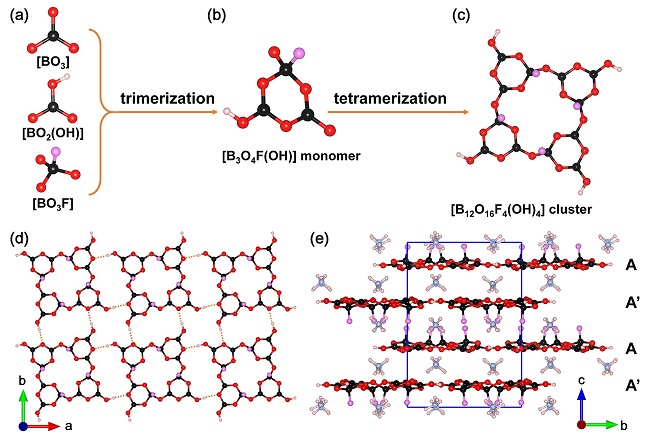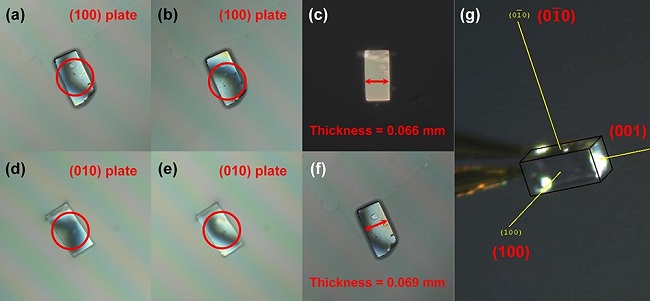Birefringent crystals are utilized in various technologies owing to their functional properties which range from modulation to detection of light polarization. The properties arise from the anisotropy of the refractive index along different optical axes in a crystal medium. The availability and need for deep-ultraviolet (deep-UV) polarized light working below 200 nm have greatly promoted attempts to find deep-UV birefringent crystals, and research into the discovery of such candidates is still very active in both academic and industrial communities.
Birefringence and band gap are the two key parameter for a deep-UV birefringent crystal. Curiously, could the enhancement of two critical properties for deep-UV birefringent crystals be achieved at the same time? And it remains to be seen whether more effective strategies can produce better results than those of previous ones. With this in mind, two types of anions, F and OH, are found since both are capable of increasing the polarizability anisotropy and HOMO-LUMO gap. Based on this, a research group at Xinjiang Technical Institute of Physics & Chemistry, Chinese Academy of Science, proposed a strategy of double modification, that is, introducing two types of anions (F and OH) for increasing the polarizability anisotropy and HOMO-LUMO gap simultaneously. Using this strategy, a new metal-free (NH4)4[B12O16F4(OH)4] (abbreviated as ABFH) was characterized as a potential deep-UV birefringent crystal. ABFH shows the largest birefringence among all inorganic hydroxyborates with experimentally measured values. Structural analysis shows that the nearplane arrangement of [B12O16F4(OH)4] cluster is responsible for the large optical anisotropy. Theoretical calculations indicate that its π-conjugated [BO3] and [BO2OH] units are the main source of this large optical anisotropy. More importantly, the finding of more hydroxyfluoroborates will largely expand the frontiers of complex borate chemistry and borate-based optical materials.
Figure 1 Crystal structure of ABFH
Figure 2. The birefringence test for ABFH


 (86) 991-3838931
(86) 991-3838931 lhskj@ms.xjb.ac.cn
lhskj@ms.xjb.ac.cn (86)991-3838957
(86)991-3838957 40-1 Beijing Road
Urumqi, XinjiangChina
40-1 Beijing Road
Urumqi, XinjiangChina